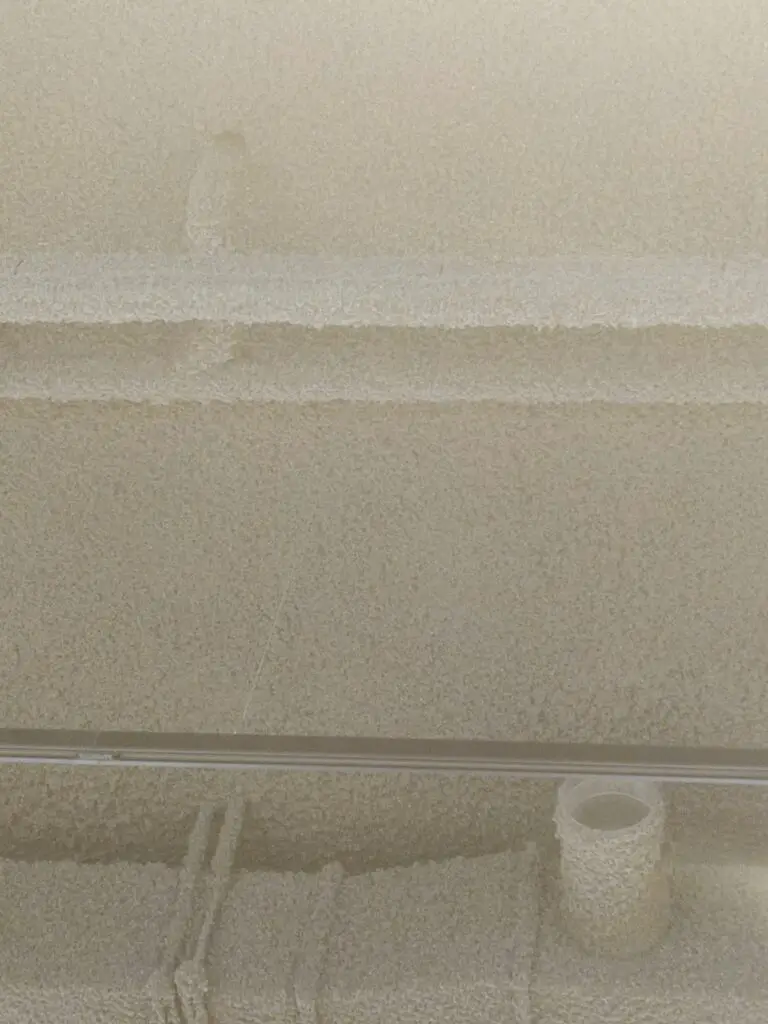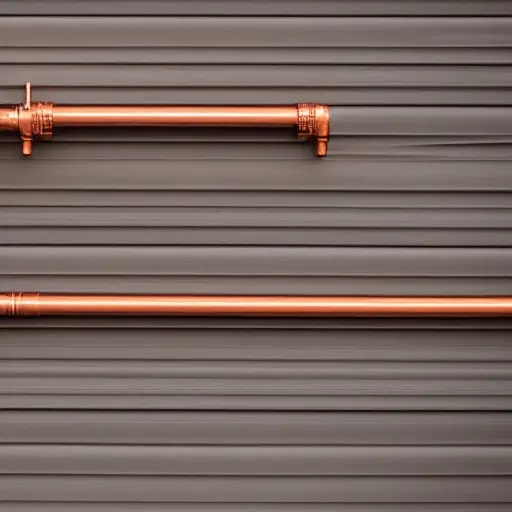Plaster and cement are excellent choices to finish the walls of your basement, especially if you plan on using them as a finished space.
If you have access to the walls in your basement and aren’t planning on finishing them with drywall or plaster, then covering the exposed pipes with cement might be a great idea. Let’s examine how you can do this.
Can you plaster or cement over copper pipes?
Yes, you can cover copper pipes with plaster or cement. It is important to add enough support for the copper pipe when you do this though. Adding plaster and cement increases the weight of the pipes. They can sag and break if you don’t support them well enough.
After you have applied plaster or cement, you should add more support clips to keep the copper lines straight.
With plaster or cement, you don’t need to worry as much about odor, and you can easily patch them up if they are damaged.
With cement, you can also paint it, which gives it a finished look. When you are cementing over copper pipes, make sure that you apply a clear sealant. This barrier helps to protect the pipe from corrosion and water damage. Just make sure that you apply it directly to the copper pipe and not the joint.
What You Need To Know Before Cementing Over Copper Pipes
Before you cement over copper pipes, you need to make sure that they are clean and bare.
First, you need to clean away any dust, dirt, or debris from the pipes. You can do this with a brush, a vacuum, or a wet rag.
After cleaning the pipes, you need to make sure that they are bare. This means that you need to remove any tape or adhesive or paint that is used to hold the pipes in place. If you don’t remove the adhesive, it can lead to corrosion.
With clean, bare pipes, you can cement over the top with no problems. You also need to make sure that you have the right tools for the job. Make sure that you have a putty knife, a trowel, a bucket, and a few rags on hand. You can also use a small paint roller if you are applying cement to a large surface area.
Types of Plaster For Covering Pipes
There are different types of plaster that can be used for this job:
– Plaster of Paris – This is a common choice for covering copper pipes. It is inexpensive and easy to mix up. However, you don’t want to use it on porous surfaces. It is best for covering tiles and walls because they aren’t porous.
– Gypsum-Based Plaster – This type of plaster is great for almost any surface. However, it is more expensive than the standard plaster of Paris. It is also harder to mix up, but that can be a good thing because you can adjust the consistency as needed.

– Cement-Based Plaster – As the name suggests, this plaster is actually made of cement. It is an excellent choice for covering copper pipes, especially if you don’t have access to the walls. It also works great on porous surfaces.
Types of cement For Covering Pipes
There are also different types of cement that can be used for this application. Keep in mind that cement is quite heavy and you will need to add a lot of supports for the copper pipe.
– Standard Cement – This is the best choice for covering pipes. You should let the cement dry for at least 48 hours before applying paint over the top.
– Cement Colorants – These are great if you want to tint your cement. They come in a variety of colors and can be mixed with standard cement. It can take up to 5 days to dry, so make sure that you plan accordingly.
Disadvantages of covering copper pipes
If you are planning to cover copper pipes with plaster or cement, make sure that you don’t cover anything porous.

Copper pipes can leak and if you add cement or plaster over them, it can be harder to detect this. This can result in a lot of damage.
Copper lasts a long time. If you have applied cement over it, it can be harder to reuse it if you want to renovate it again later on.
Copper expands and contracts quite a lot. This can break the cement or plaster if it hasn’t been properly applied. The copper can also make some noise if you didn’t use enough dampening materials around it.
Why Cover Copper Pipes?
There are a few reasons why you might want to cover copper pipes in your basement.
For one, it gives your basement a finished look. This can make things cozier.
Secondly, the pipes are better insulated and this can make sure that they don’t freeze during the winter.
If the copper pipes aren’t covered, it is possible that someone accidentally runs into them and breaks the pipes.
To conclude, we can state that it is possible to cover copper pipes with cement or plaster. It is important that it is done in the right way though.
The copper needs to be cleaned before you start. It is also necessary to add enough support so that the copper doesn’t sag. There should also be some noise dampening around the copper. Finally, it is essential that you take into account that copper can expand when it is hot. Make sure that the plaster or cement doesn’t crack when this happens.
Covering copper pipes can lead to a more finished look. This is why a lot of people do this. There are other ways to do this though. You can also use drywall or wood to encapsulate the copper pipes.
As we have discussed before, covering copper pipes has unique advantages and disadvantages that you have to take into account before doing this.